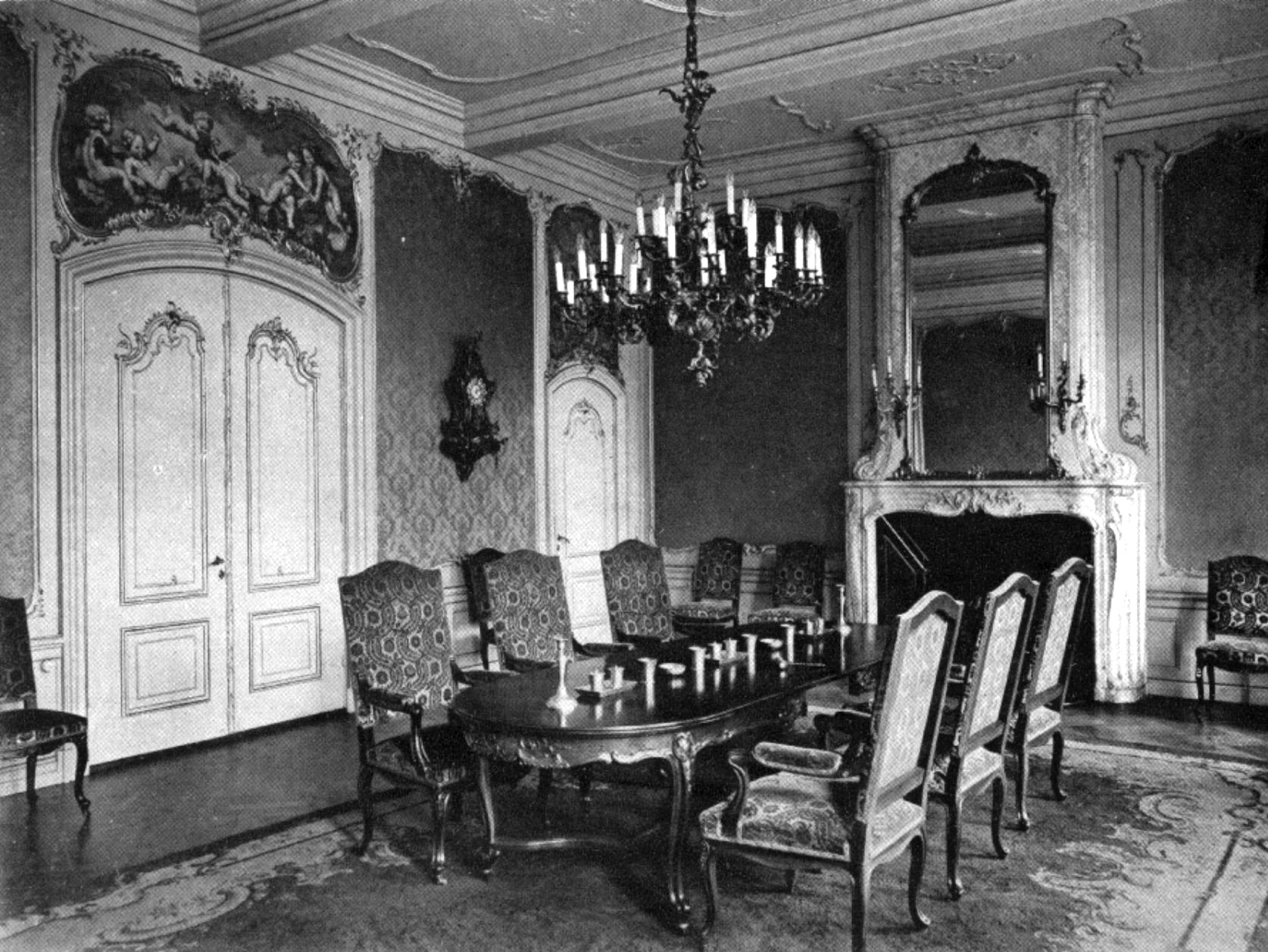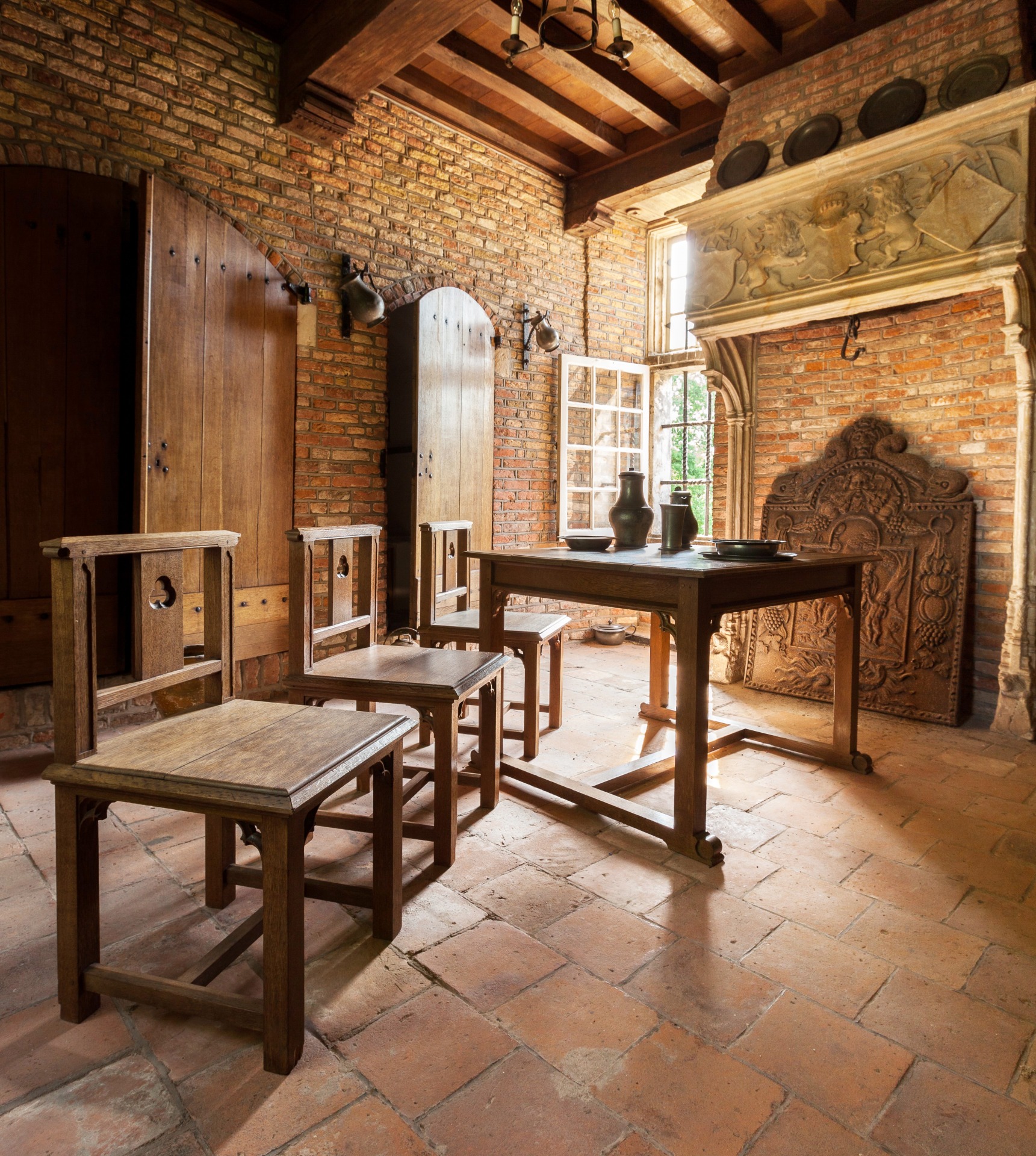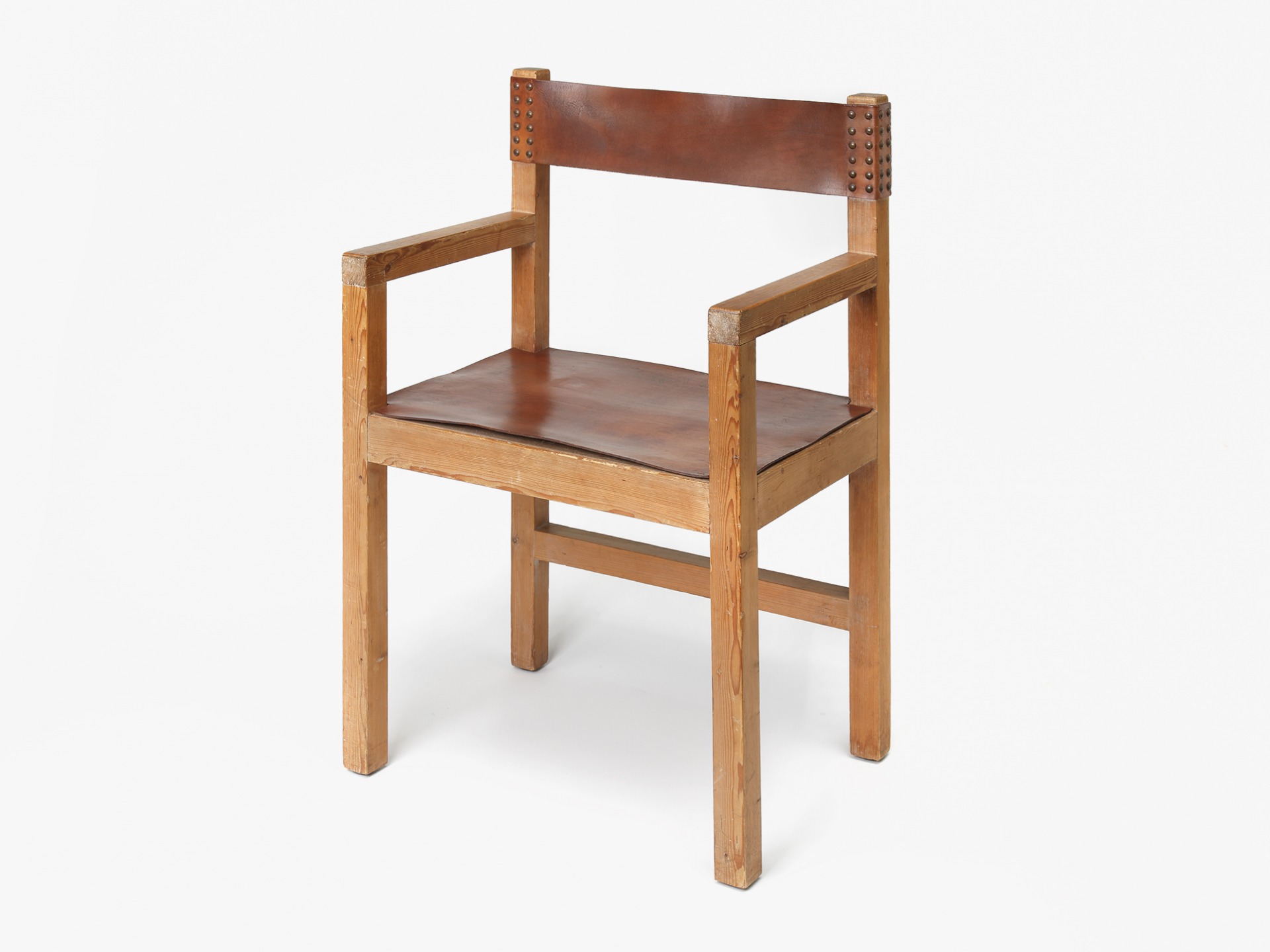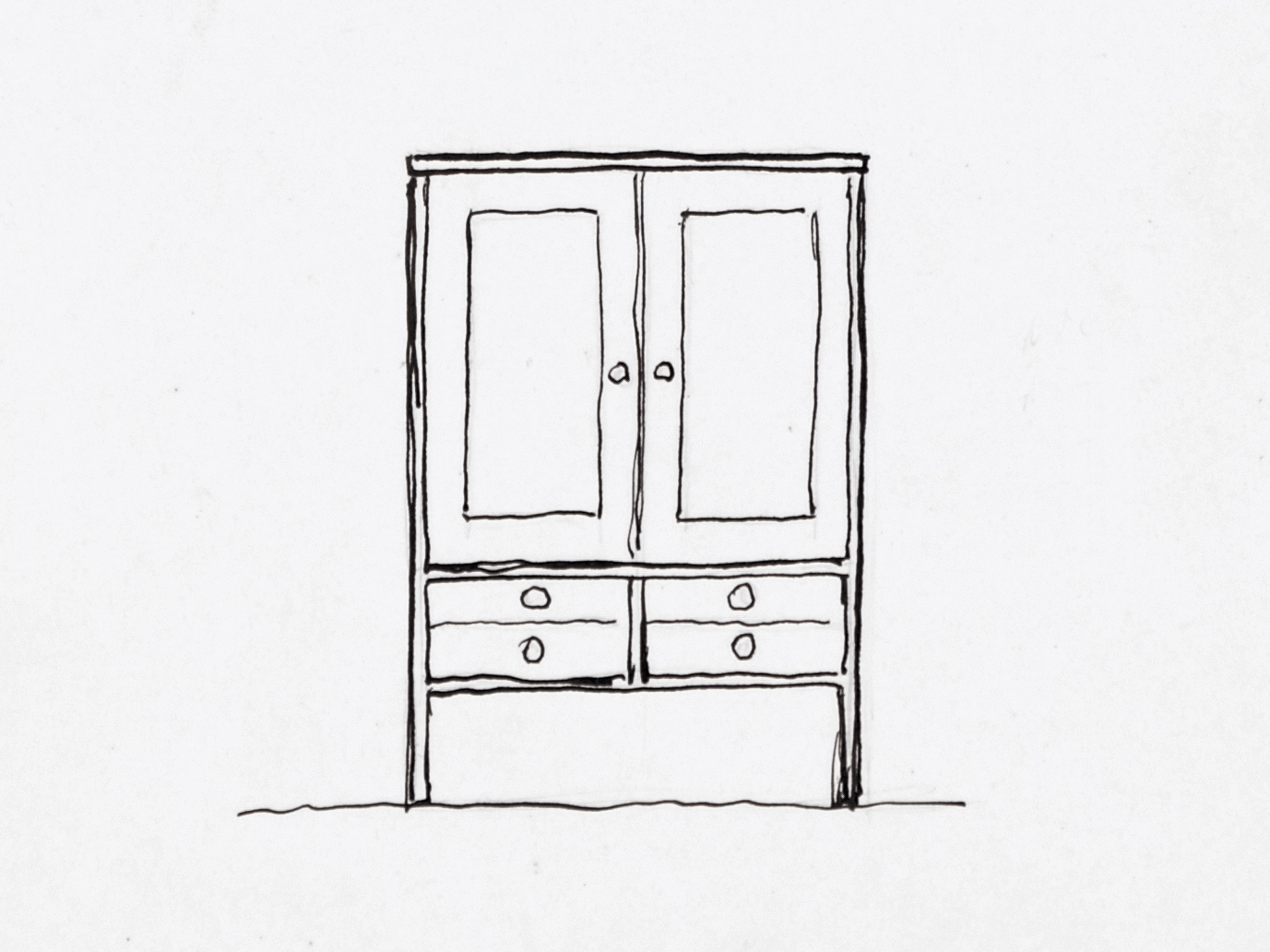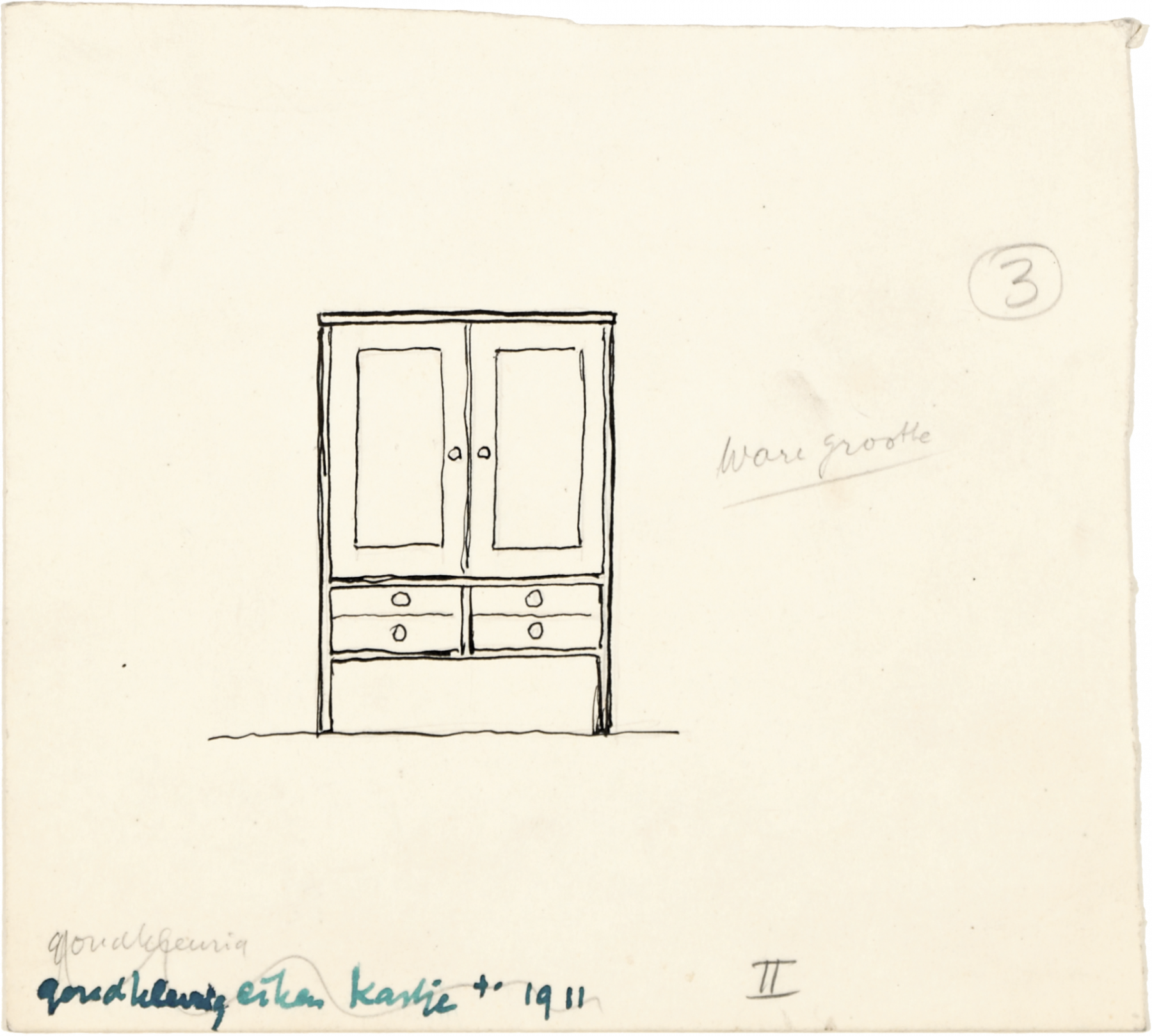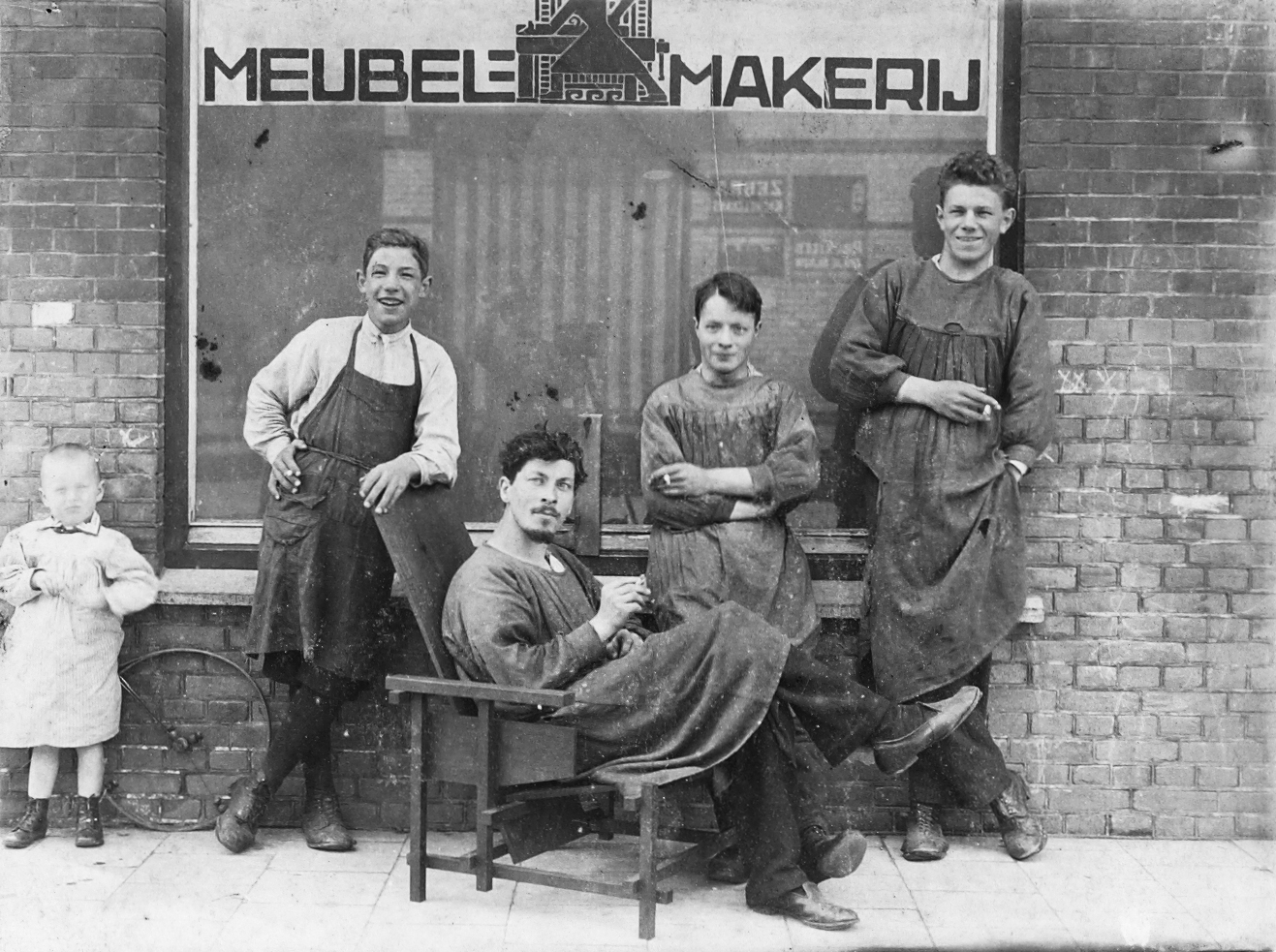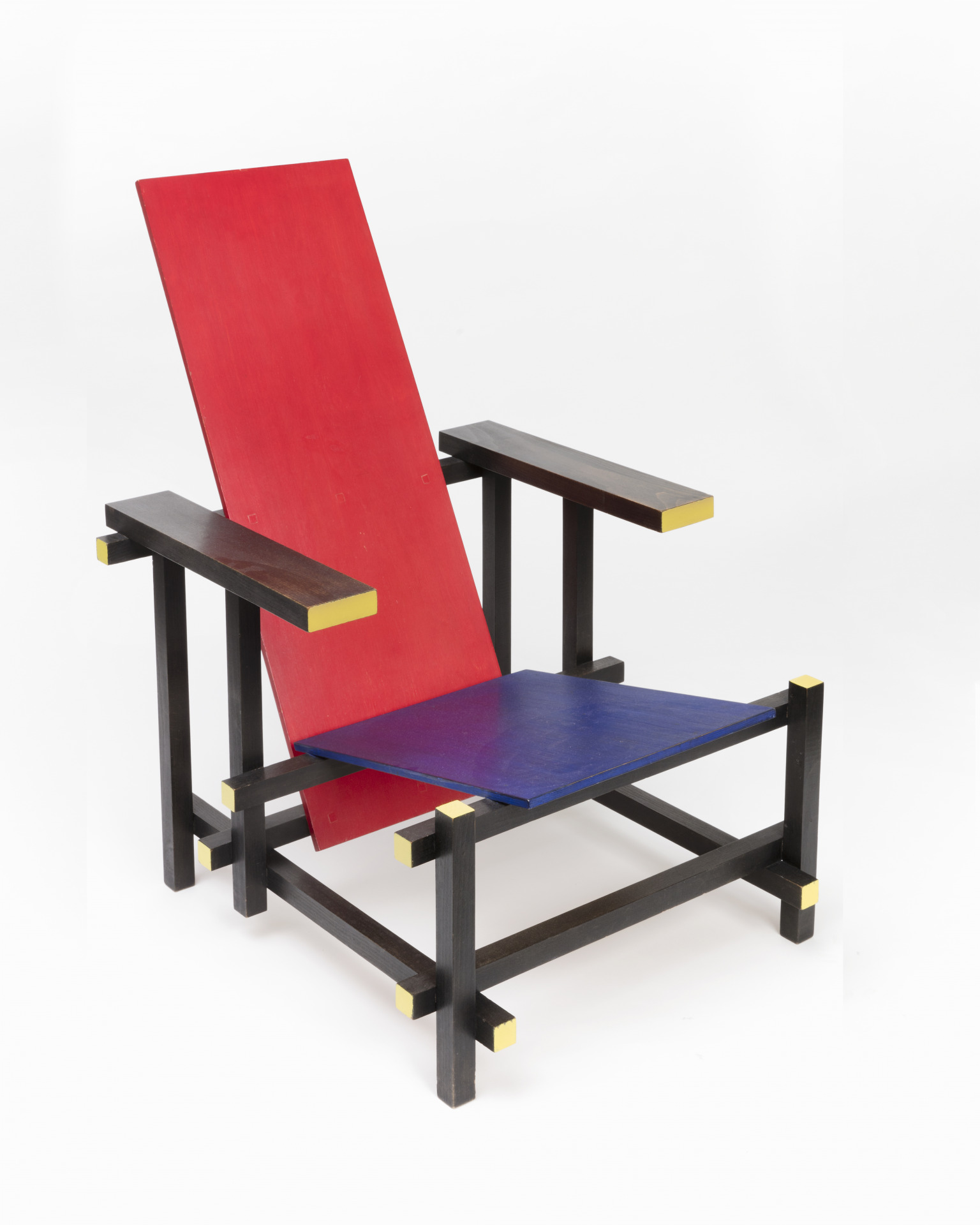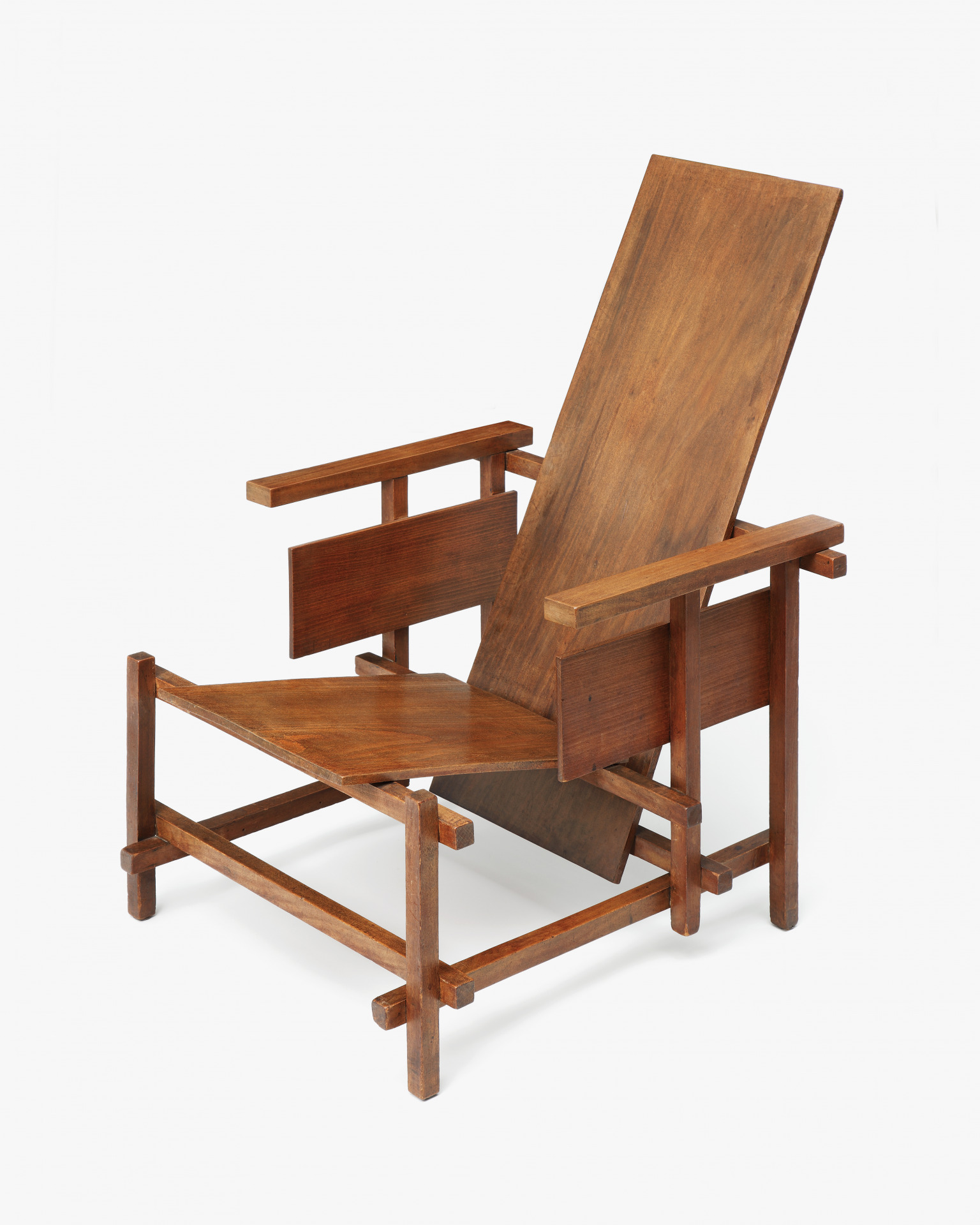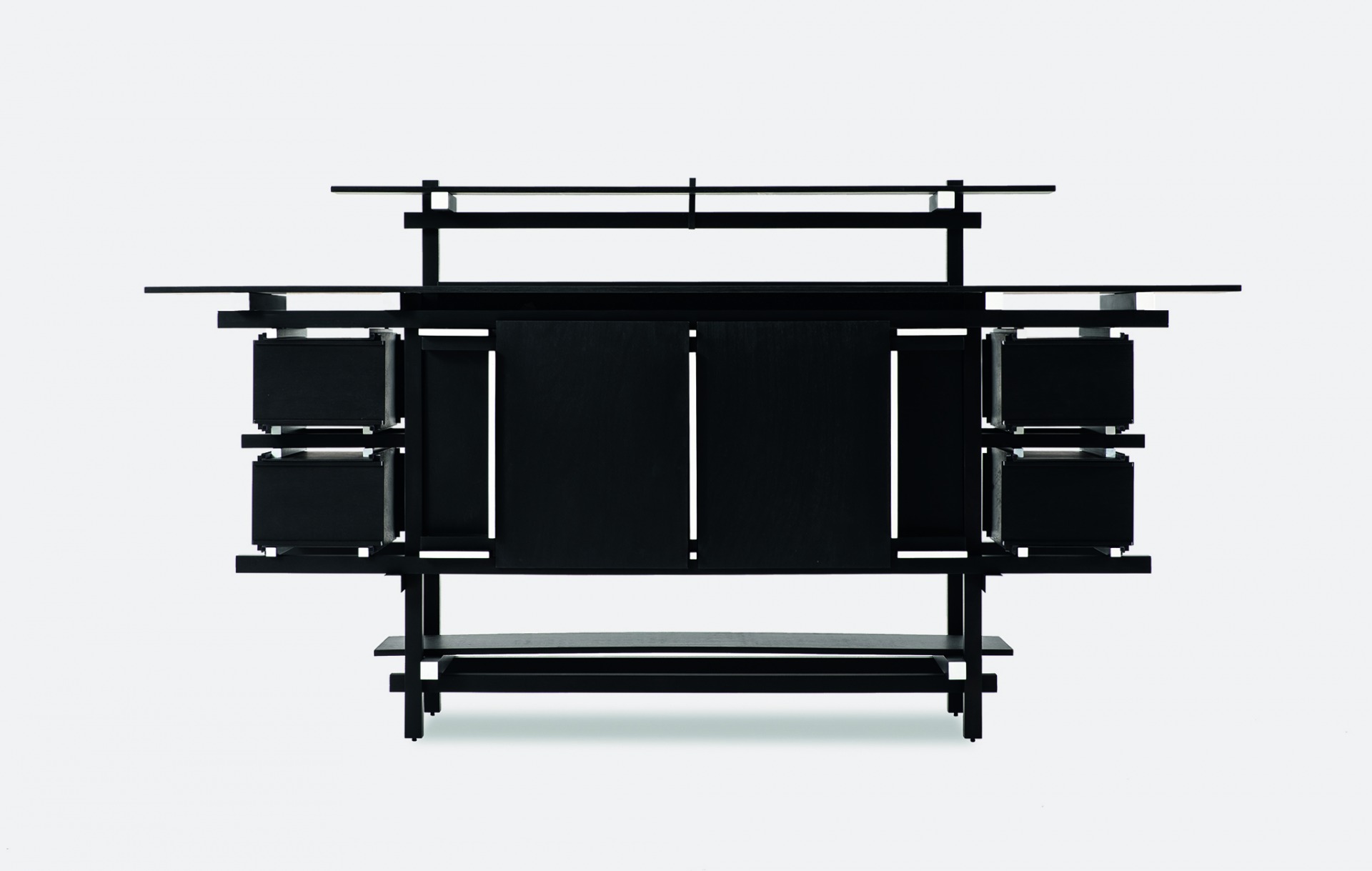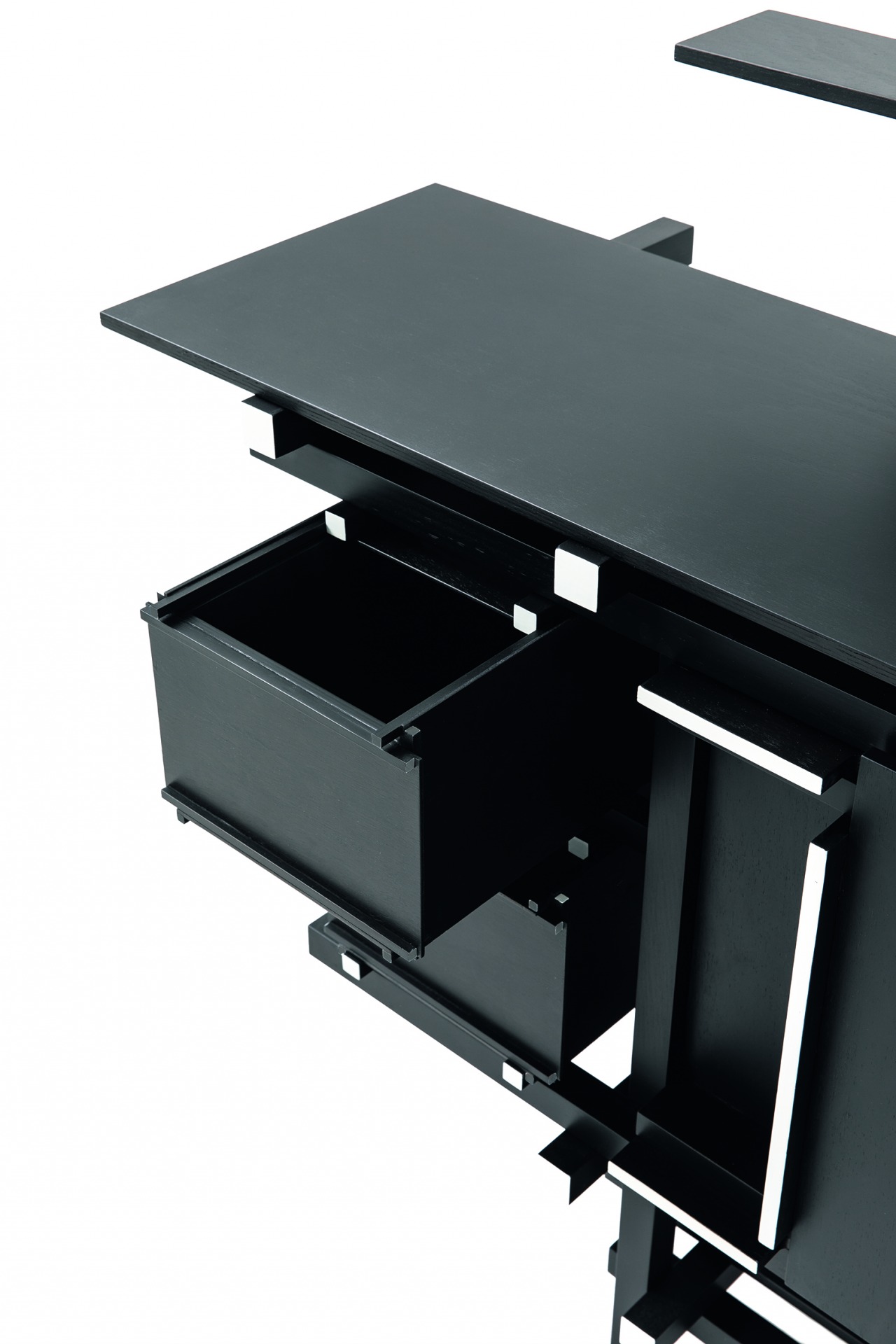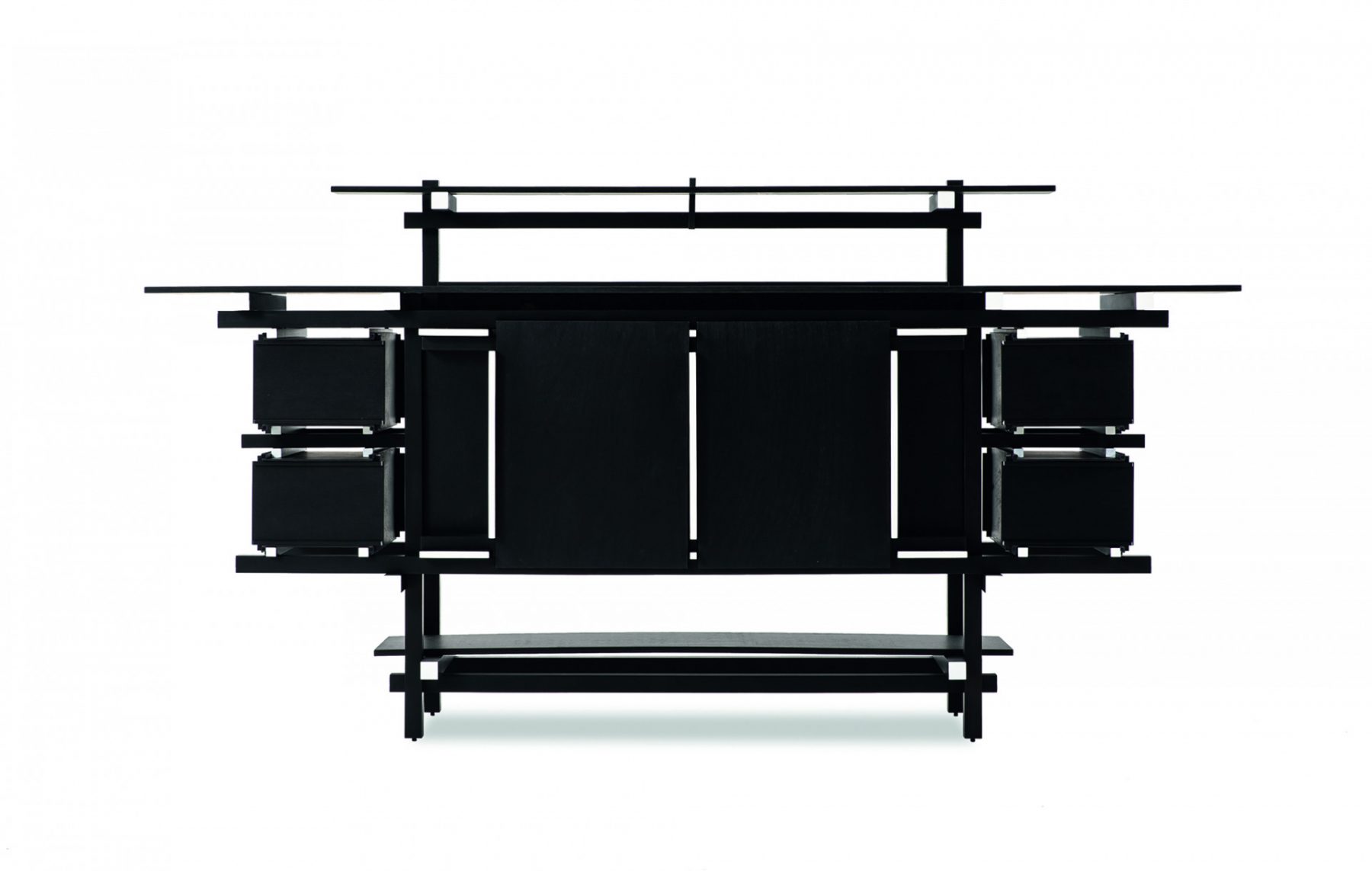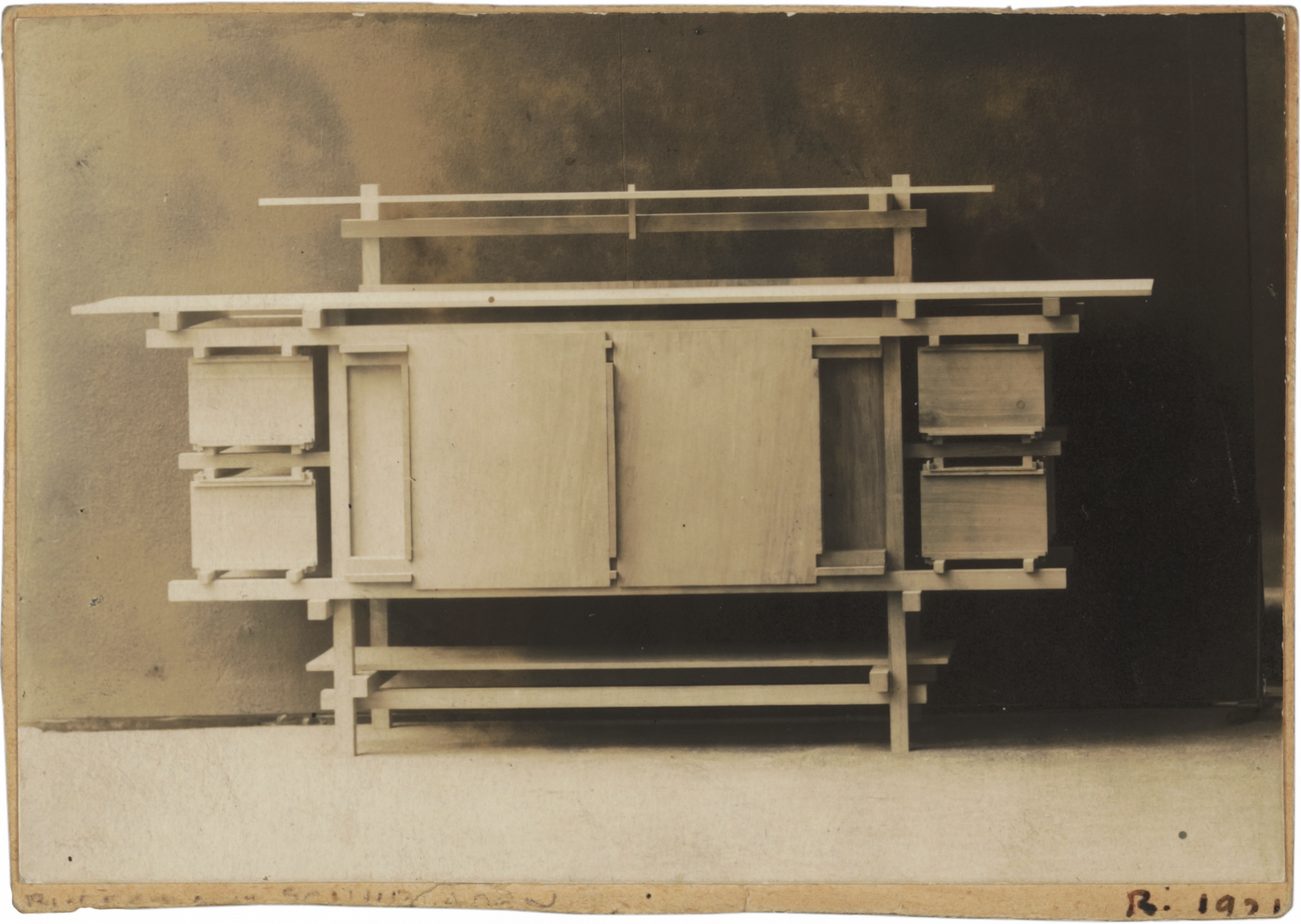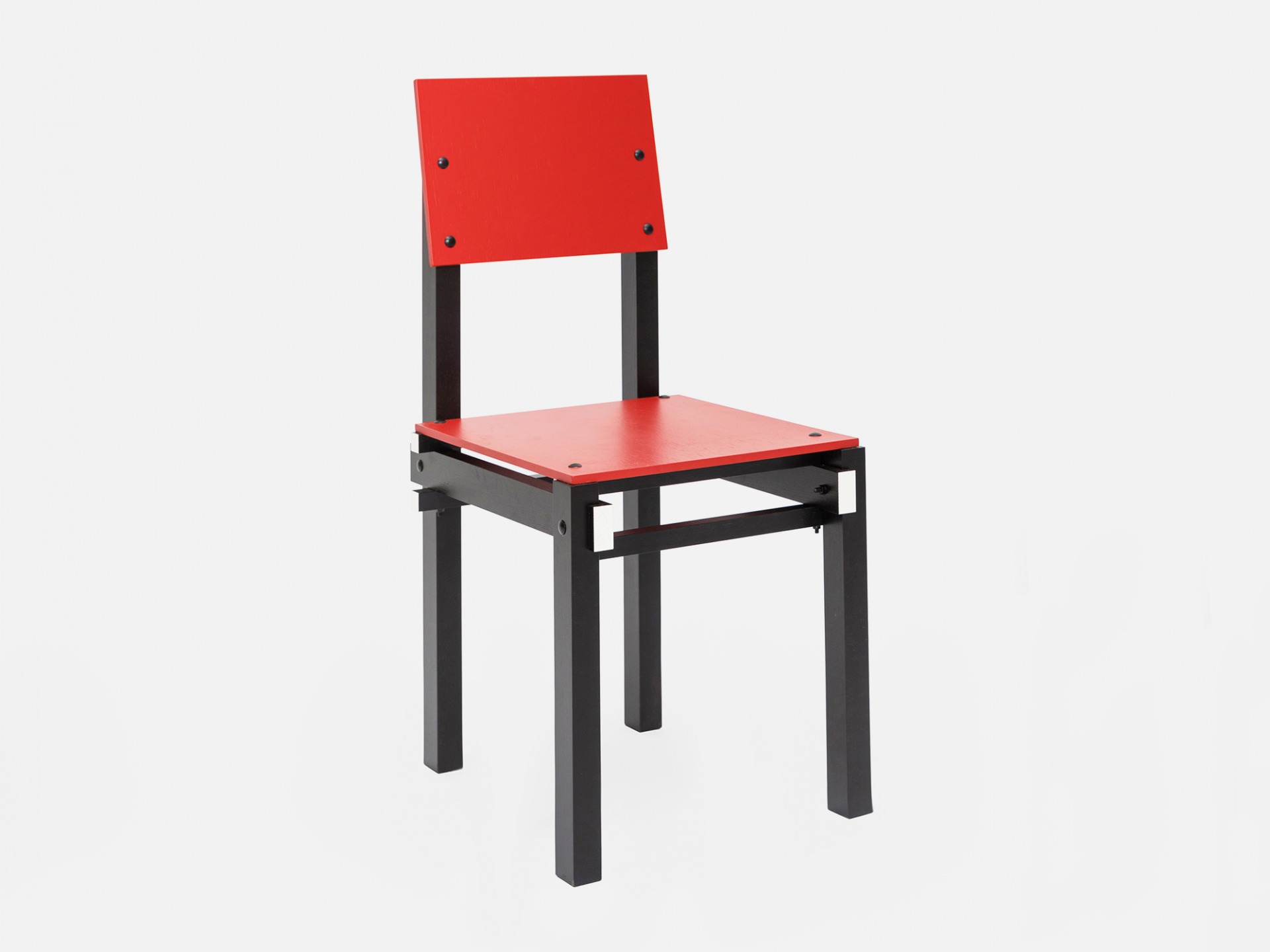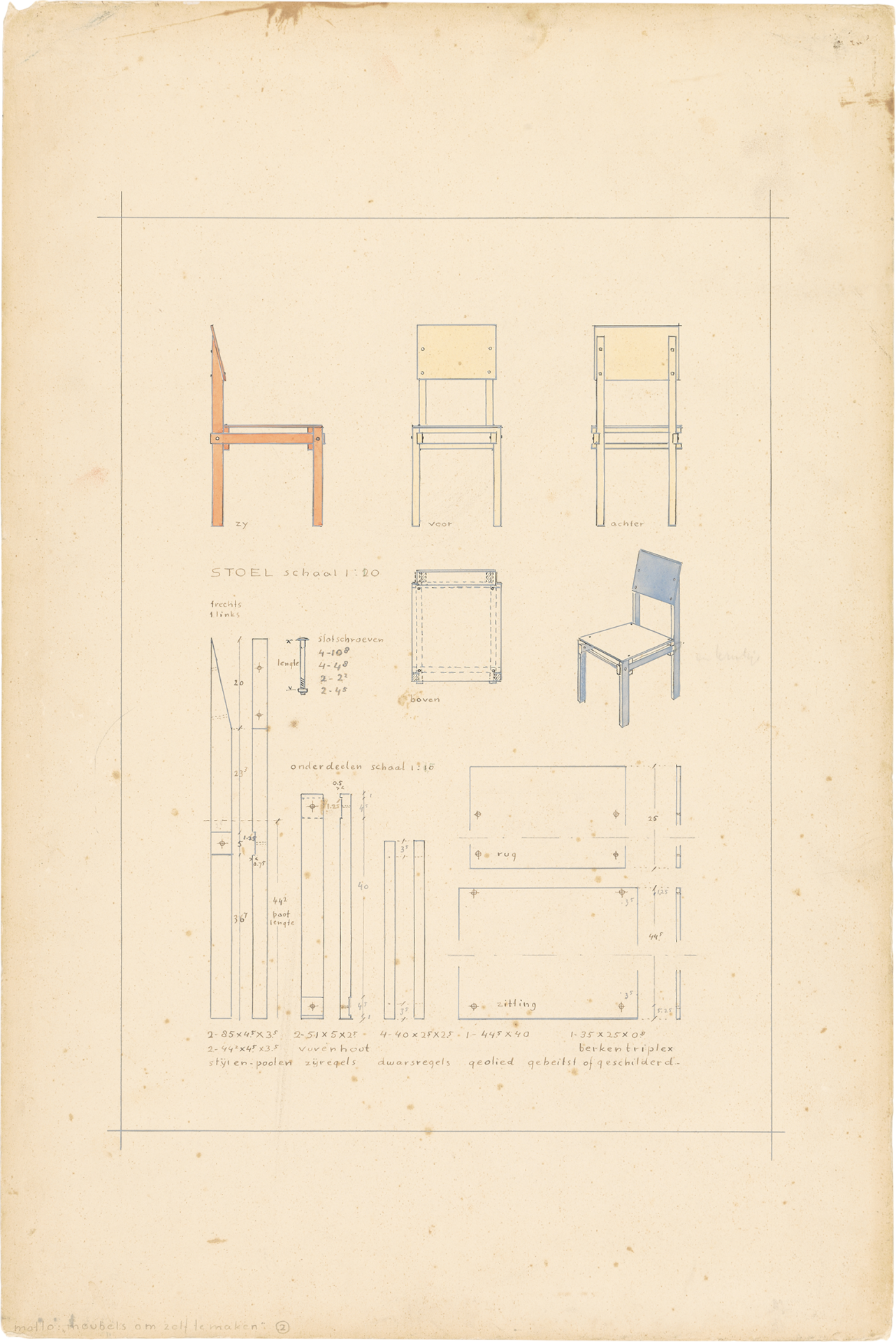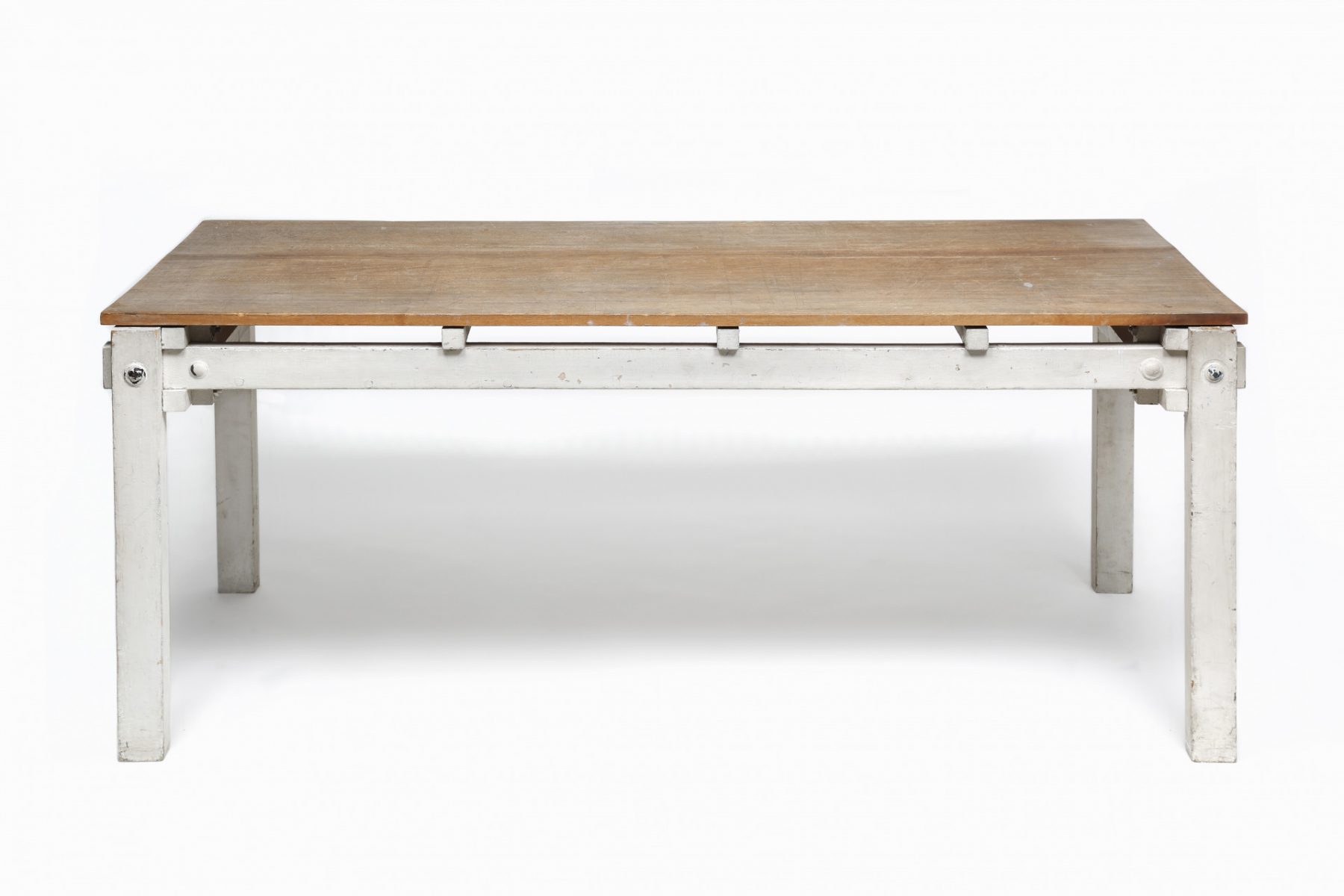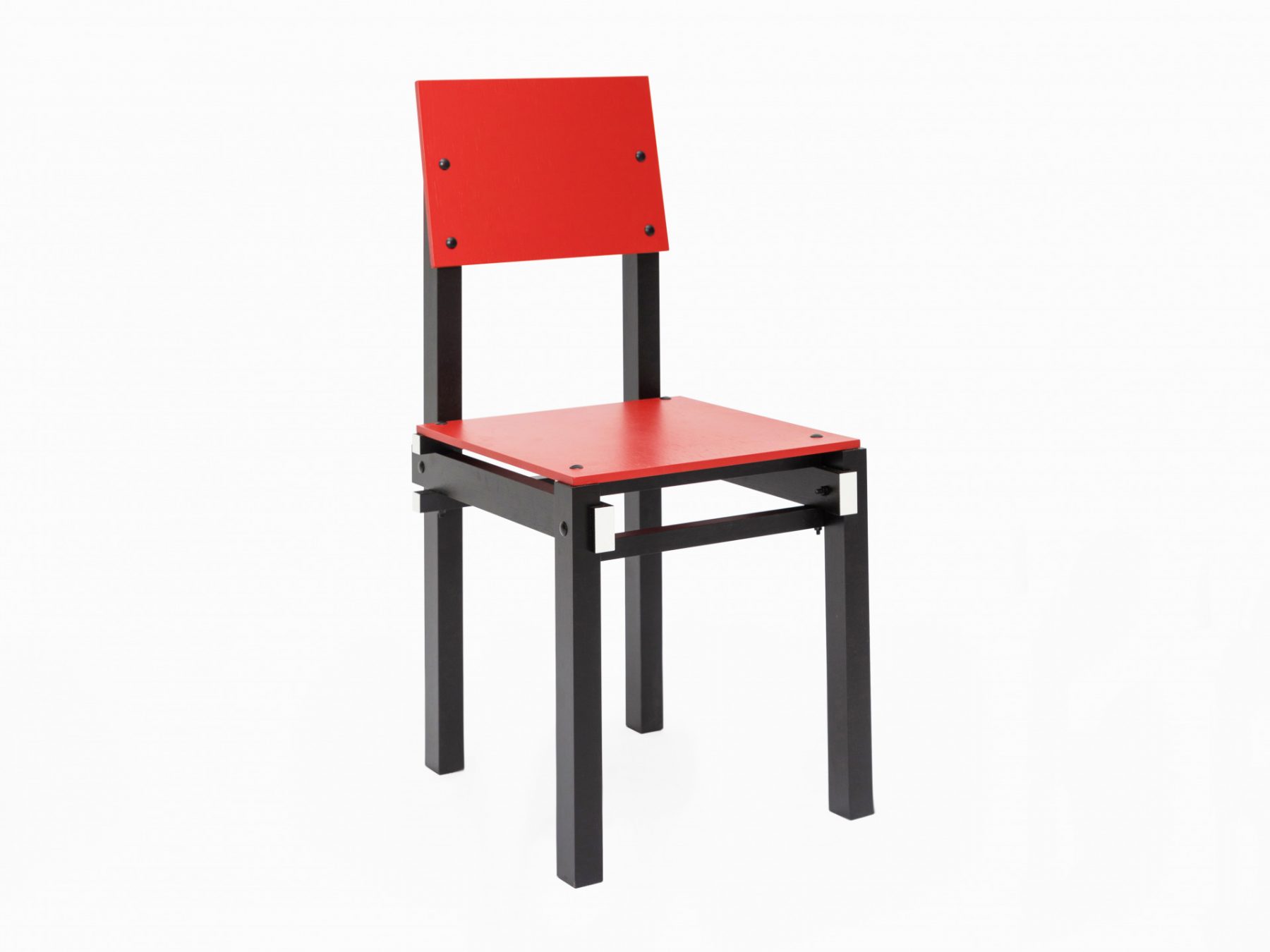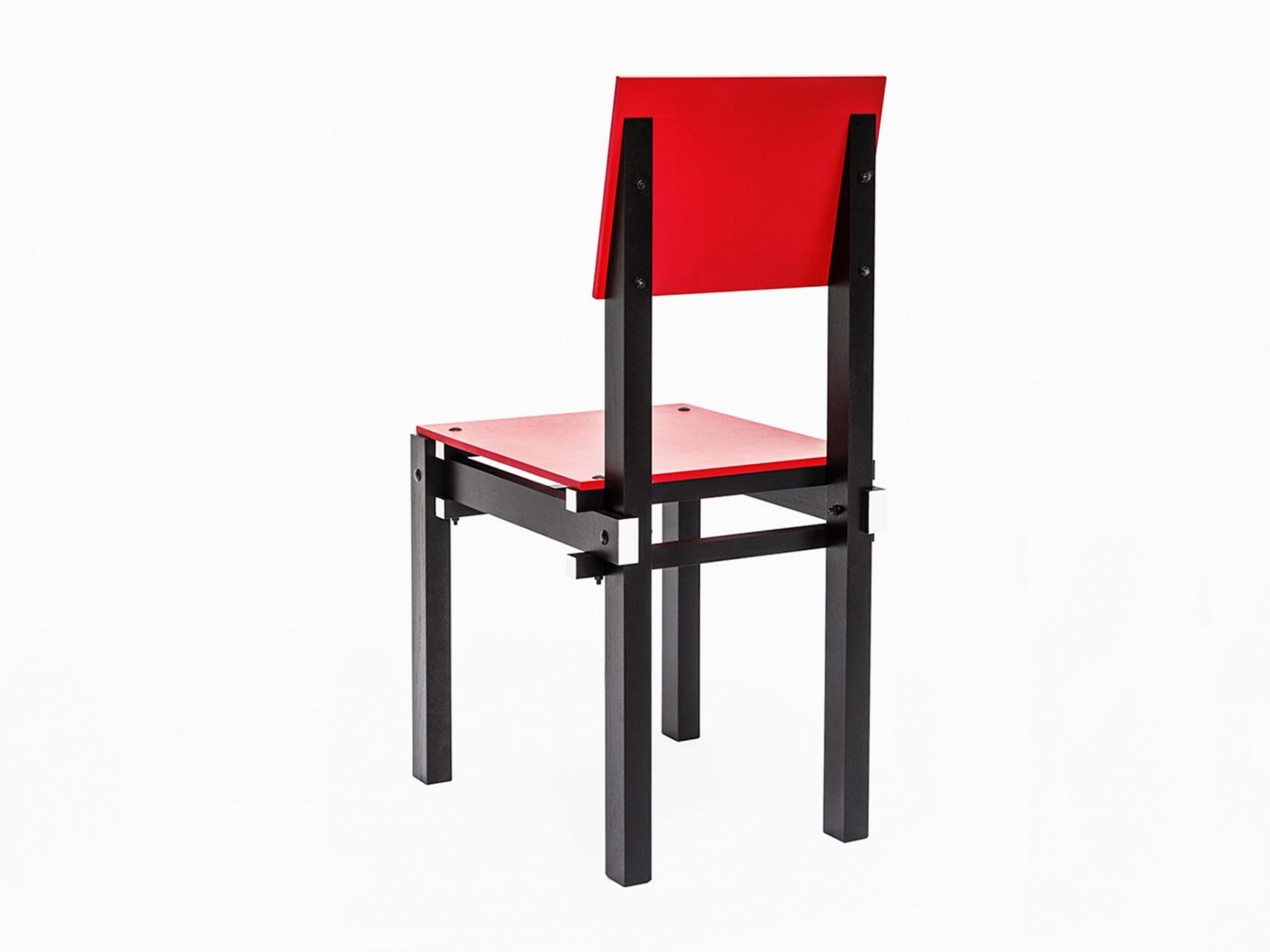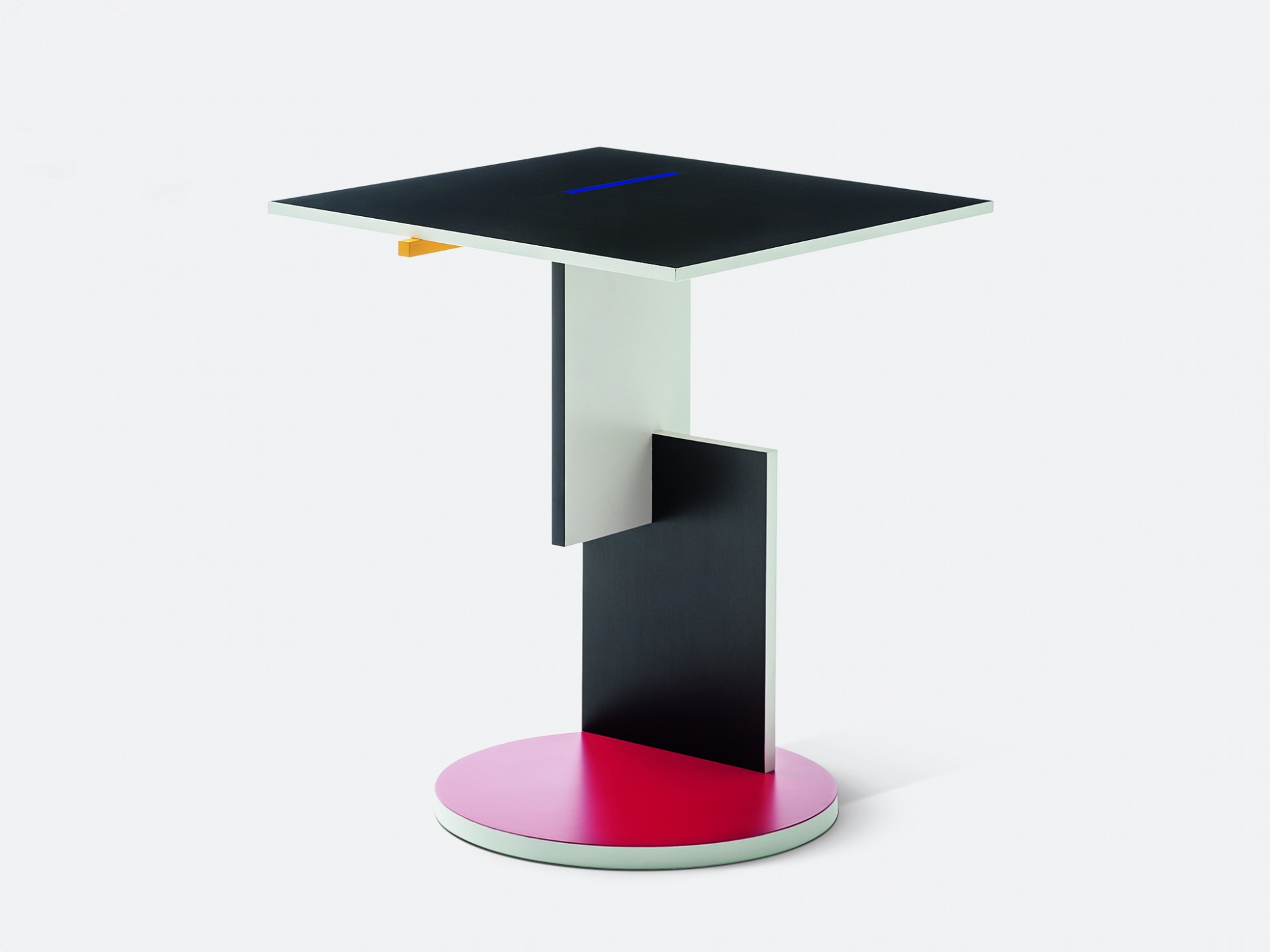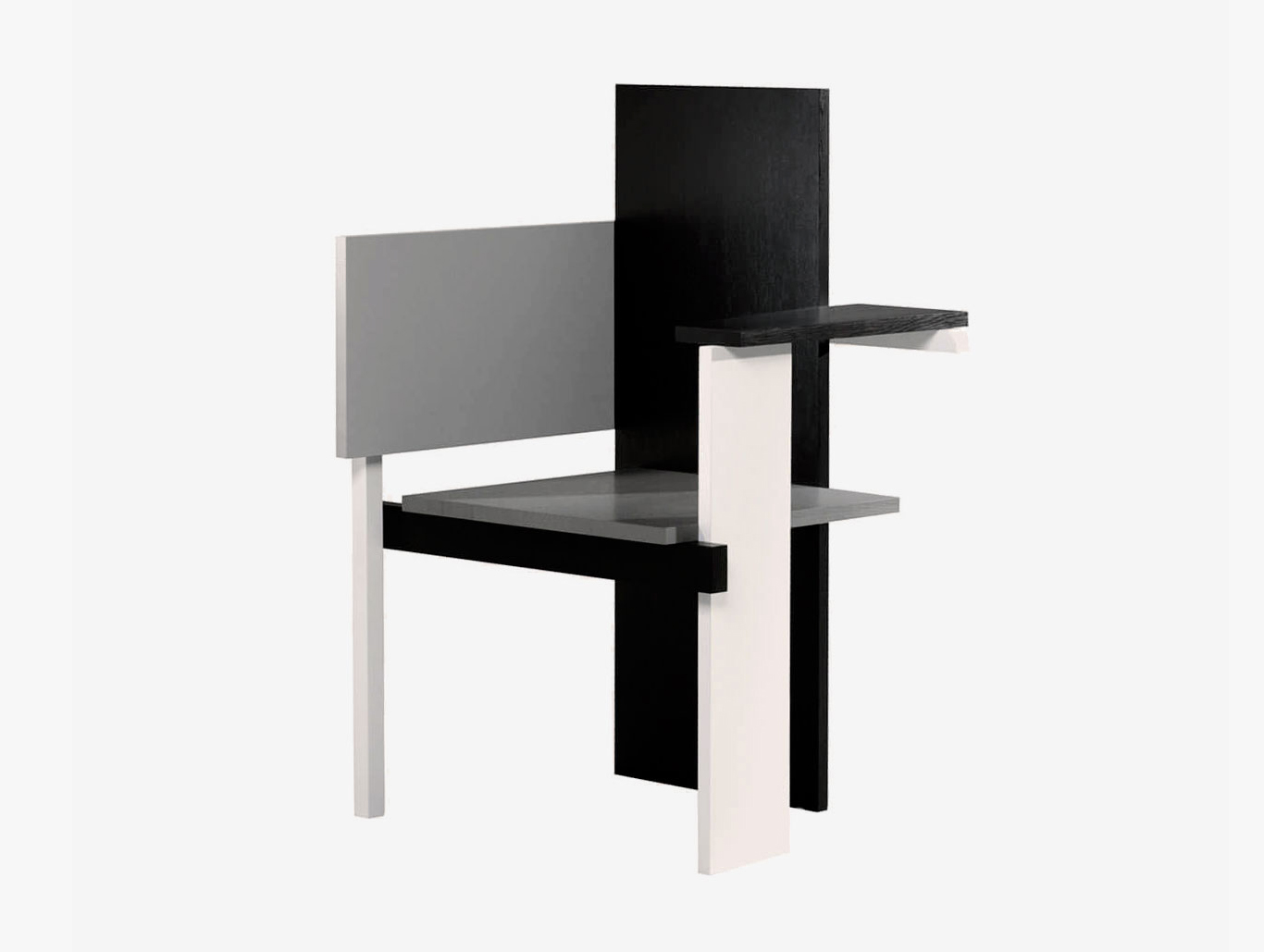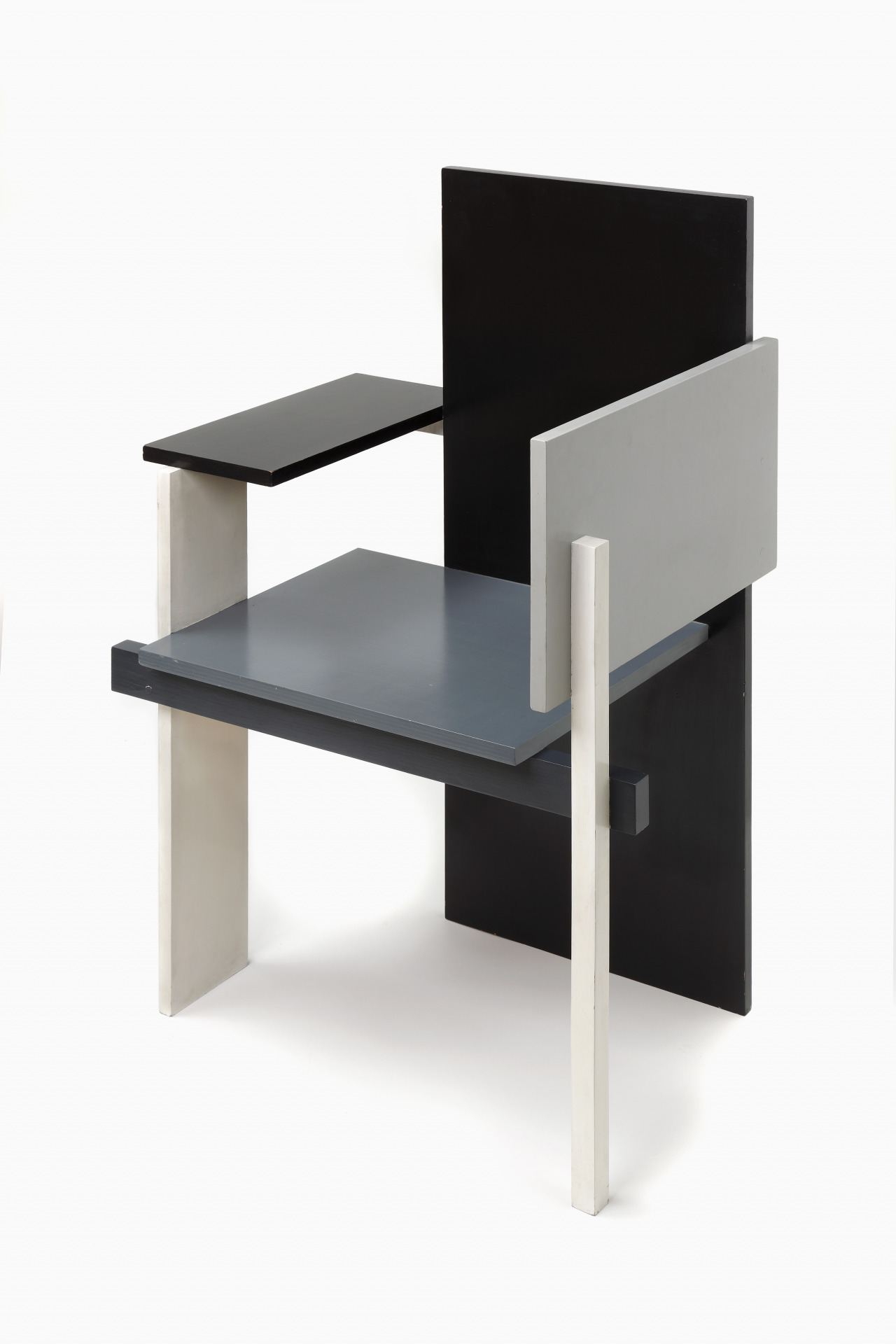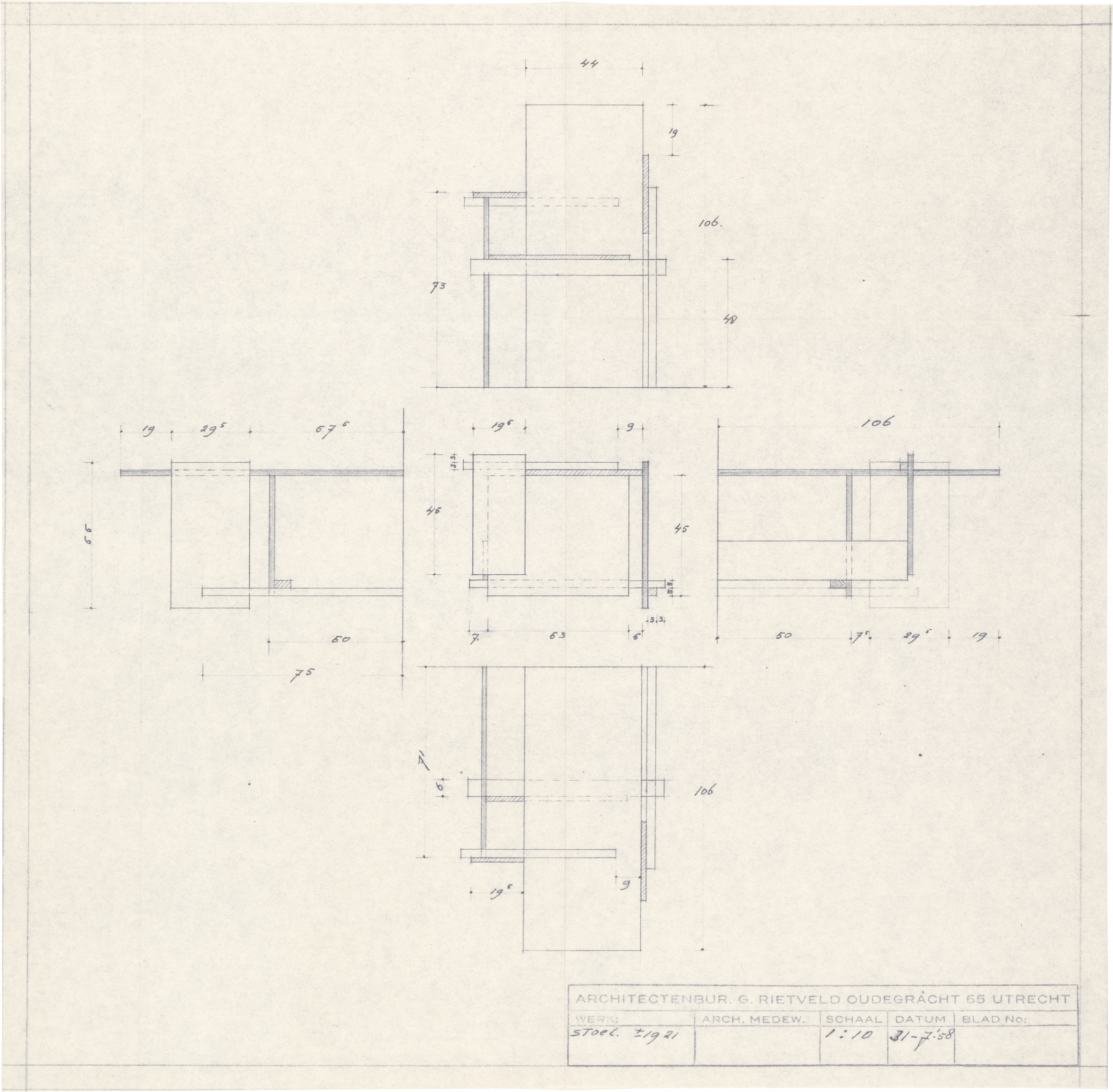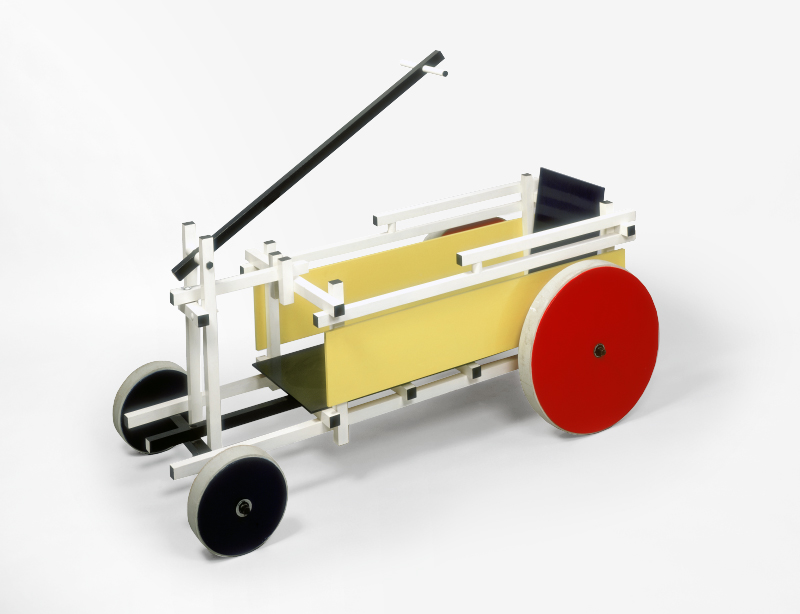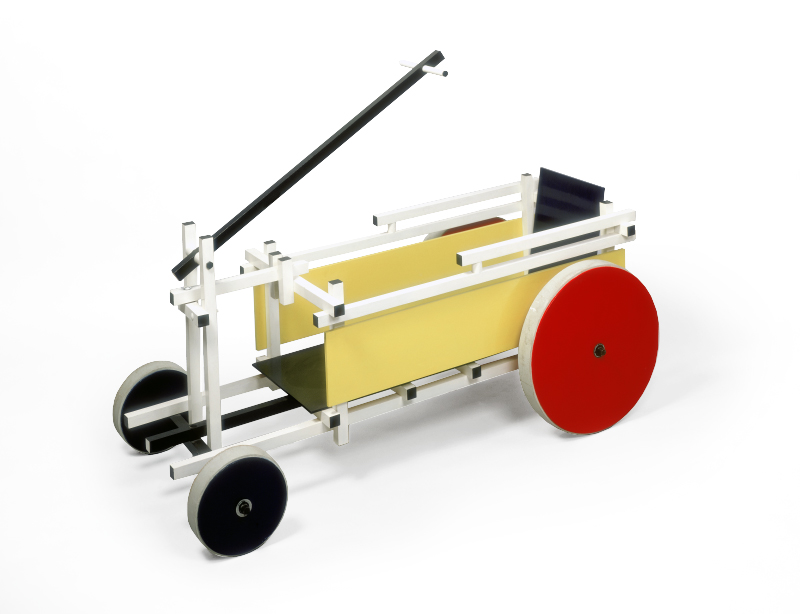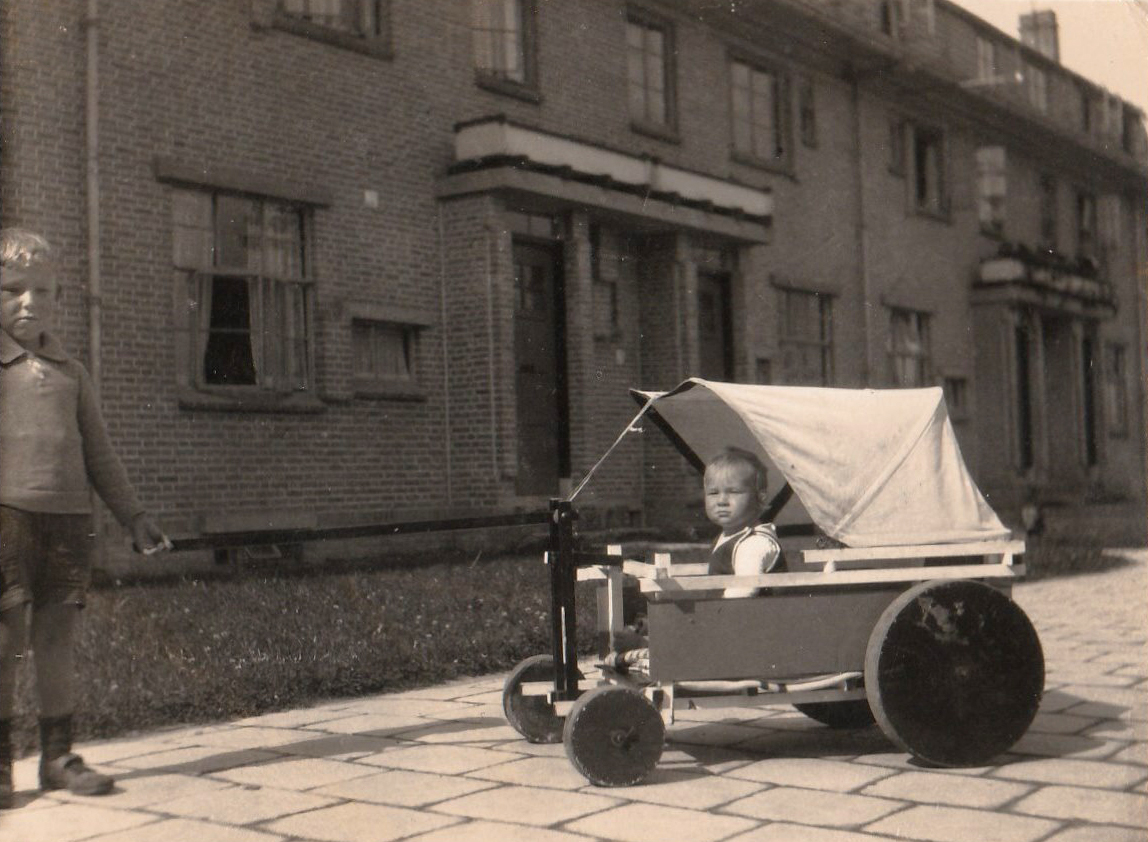ELLING BUFFET, 1919
Rietveld made this buffet in 1919 for his friend and colleague Piet Elling. He himself later stated:
“The cabinet consists of a frame of sticks, rules we’ll call it, all of the same size. (…) But I didn’t want to close that cupboard with a flat door, I closed it with a composition of planes that are placed spatially against each other in the same three dimensions of the space as the frame itself, and that’s why you can see the wonderful shape of that door. The drawer, which is also composed of planks and slats, is all of the same kind. And now I would have liked to make this cabinet asymmetrical because I felt that this symmetry was actually too much bound to the mass, so I would have preferred to place it freely in the space, but that was still too difficult at the time, I was happy that I could bring it this far and so I made it the same on both sides.”
The buffet is depicted in the magazine De Stijl from 1920.


